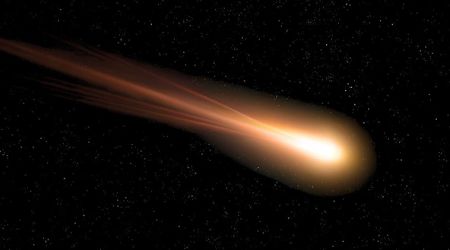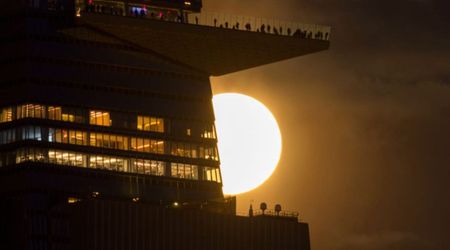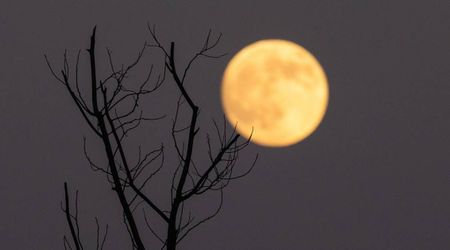Dark Energy Camera captures Chamaeleon I, a star-forming cloud — and it looks like a celestial painting

The Chamaeleon I dark cloud presents a breathtaking cosmic spectacle, standing out as a true masterpiece within the vastness of the universe. This particular view vividly captures the interplay of dense interstellar dust, appearing as deep black smudges, alongside luminous reflection nebulae. These nebulae are brilliantly lit by the nascent stars forming within this dynamic region, as per the recent article on Space.com.
Our latest #CosmoView features a breathtaking visible-light image of the Chamaeleon Infrared #Nebula taken with @GeminiObs, a Program of NSF's #NOIRLab, that looks as though it is ready to flutter off the screen!
— NOIRLab (@NOIRLabAstro) December 11, 2021
For more details, see the press release: https://t.co/coOe3P8Wv3 pic.twitter.com/plQuq0VTVd
Situated approximately 500 light years from Earth, the Chamaeleon Complex, which includes Chamaeleon I, is our solar system's closest stellar nursery. It's an immense cloud of molecular gas where stars are actively being born. This process occurs when frigid pockets of molecular hydrogen gas, under the influence of gravity, contract and condense, eventually collapsing to ignite new stars.
Dark Energy Camera Captures Sparse Pockets of Light Amongst Dark Clouds of Chamaeleon I! Check out our latest Cosmoview 👆🎥 pic.twitter.com/tSmx1brh0l
— NOIRLab (@NOIRLabAstro) June 16, 2025
Molecular clouds are frequently laden with dust, to the extent that some sections become entirely opaque to visible light, as vividly demonstrated in this image of Chamaeleon I. This particular view was captured by the 570-megapixel Dark Energy Camera (DECam), located on the Victor M. Blanco Telescope at the Cerro-Tololo Inter-American Observatory in Chile. The more luminous areas you observe are reflection nebulae. These are essentially pockets of dust situated near newly forming stars, which brilliantly reflect and scatter the light emanating from these young stellar bodies.

Chamaeleon I is notable for hosting three specific reflection nebulae. Prominently featured in the center of the image is Cederblad 111, appearing as a bright expanse. Above it, you'll see the smaller Cederblad 110, easily recognizable by its distinctive C-shape. Even further above Cederblad 110 lies the Chamaeleon Infrared Nebula, which offers a glimpse into the active star-forming region through streams of matter ejected from the poles of a young, low-mass star within. In this image, the Chameleon Infrared Nebula exhibits an orange hue. Such outflows are a common characteristic of young stars found within active star-forming regions like Chameleon I.

After a molecular cloud fragments and collapses to form a young star, the star grows by pulling in surrounding gas. Sometimes, it ingests too much, expelling the excess as beams of matter from its magnetic poles. One such beam carved out the Chamaeleon Infrared nebula. Other jets from young stars also impact the gas of Chamaeleon I, making it glow as Herbig-Haro objects, visible as small red patches throughout the image, as mentioned by the outlet.
To truly grasp the characteristics of Chamaeleon I, it helps to understand its cosmic neighbourhood. Our Sun and solar system are currently traversing a region of space known as the Local Bubble. This area is characterized by a notably sparse and low-density distribution of gas in the interstellar medium. This void was created over the past 20 million years by numerous supernova explosions, whose powerful shockwaves cleared out much of the surrounding molecular gas, leaving behind a less dense "bubble" in space.

Interestingly, the Chamaeleon Complex is situated right on the edge of this Local Bubble. Here, the intense supernova shockwaves have compressed its denser gas, effectively triggering the onset of star formation within it. While the Chamaeleon Complex also includes the Chamaeleon II and III dark clouds, these currently exhibit minimal or no active star birth, respectively, remaining largely dark and inert. It appears that Chamaeleon I is where all the stellar artistry is currently unfolding.









